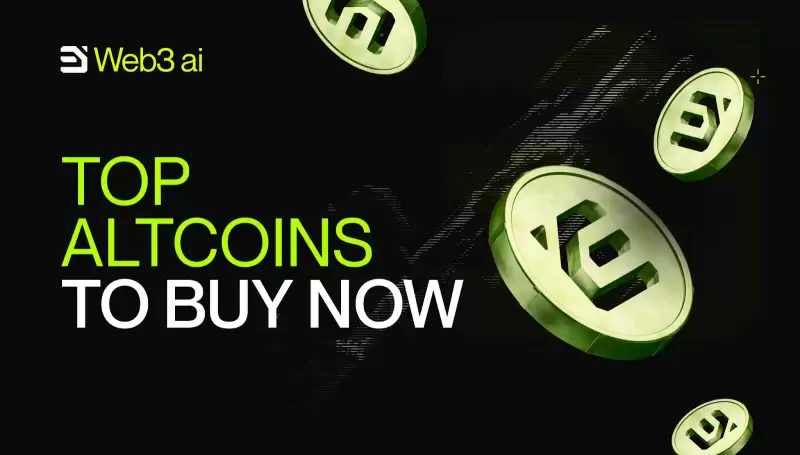 |
|
 |
|
 |
|
 |
|
 |
|
 |
|
 |
|
 |
|
 |
|
 |
|
 |
|
 |
|
 |
|
 |
|
 |
|
The enthusiasm for the Web3 vision in 2021 has faded, and Ethereum is facing severe challenges. Not only has the market's perception of Web3.0 changed

By Momir @IOSG
By Momir @iosg
TL;DR
TL; Dr
The enthusiasm for the Web3 vision in 2021 has faded, and Ethereum is facing severe challenges. Not only has the market's perception of Web3.0 changed, but Ethereum is also facing fierce competition from emerging platforms such as Solana for the remaining market share. Key issues such as Layer 2 fragmentation, erosion of value ownership, dilution of ecological control, and lack of leadership have further weakened Ethereum's user experience and economic value, and as the second-layer network's voice has increased, Ethereum's influence has been shaken. These factors ultimately led to one of the most dramatic price corrections in ETH's history.
The enthusiasm for the Web3 vision in 2021 has faded, and Ethereum is facing severe challenges. Not only has the market's perception of Web3.0 changed, but Ethereum is also facing fierce competition from emerging platforms such as Solana for the remaining market share. Key issues such as Layer 2 fragmentation, erosion of value ownership, dilution of ecological control, and lack of leadership have further weakened Ethereum's user experience and economic value, and as the second-layer network's voice has increased, Ethereum's influence has been shaken. These factors ultimately led to one of the most dramatic price corrections in ETH's history.
However, there is hope: Ethereum still has a chance to regain its glory days by promoting L2 interoperability, prioritizing the improvement of ETH-core infrastructure, and taking a decisive, performance-oriented leadership approach. Ethereum's solid underlying architecture and vibrant developer ecosystem remain its enduring advantages, but strategic action must be taken quickly to restore ETH's pre-eminence.
However, there is hope: Ethereum still has a chance to regain its glory days by promoting L2 interoperability, prioritizing the improvement of ETH-core infrastructure, and taking a decisive, performance-oriented leadership approach. Ethereum's solid underlying architecture and vibrant developer ecosystem remain its enduring advantages, but strategic action must be taken quickly to restore ETH's pre-eminence.
The cognitive shift from Web3.0 utopia to harsh reality has forced the market to re-examine Ethereum's core value proposition. The once highly anticipated ideal of "user-autonomous decentralized Internet" has now been replaced by a more ironic narrative: the cryptocurrency field is either a Bitcoin store of value game or a digital casino. This reversal of sentiment has had a particularly significant impact on Ethereum: it claims to be the cornerstone of the new Internet paradigm, but has to face growing doubts.
The cognitive shift from Web3.0 utopia to harsh reality has forced the market to re-examine Ethereum's core value proposition. The once highly anticipated ideal of "user-autonomous decentralized Internet" has now been replaced by a more ironic narrative: the cryptocurrency field is either a Bitcoin store of value game or a digital casino. This reversal of sentiment has had a particularly significant impact on Ethereum: it claims to be the cornerstone of the new Internet paradigm, but has to face growing doubts.
What’s more serious is that Ethereum is no longer the only representative of the Web 3.0 vision. Whether optimistic or pessimistic about the future of the industry, it is not difficult to see that platforms such as Solana are becoming the new center of crypto consumer activity. Against this background, this article aims to analyze Ethereum’s most pressing strategic challenges and propose practical solutions to help it regain its advantage in the evolving landscape.
What’s more serious is that Ethereum is no longer the only representative of the Web 3.0 vision. Whether optimistic or pessimistic about the future of the industry, it is not difficult to see that platforms such as Solana are becoming the new center of crypto consumer activity. Against this background, this article aims to analyze Ethereum’s most pressing strategic challenges and propose practical solutions to help it regain its advantage in the evolving landscape.
Core Challenges
Core Challenges
Ethereum faces many challenges, but this analysis focuses on the four most pressing issues: L2 network fragmentation, declining value capture capabilities, dilution of ecosystem control, and lack of strategic leadership.
Ethereum faces many challenges, but this analysis focuses on the four most pressing issues: L2 network fragmentation, declining value capture capabilities, dilution of ecosystem control, and lack of strategic leadership.
L2 network fragmentation and fragmented user experience
L2 network fragmentation and fragmented user experience
The most significant crisis is the fragmentation of the Layer 2 network. The introduction of multiple competing execution layers has severed the user experience and on-chain liquidity, eroding the composability advantage that the Ethereum mainnet once boasted of, which is still clearly visible in monolithic blockchains such as Solana.
The most significant crisis is the fragmentation of the Layer 2 network. The introduction of multiple competing execution layers has severed the user experience and on-chain liquidity, eroding the composability advantage that the Ethereum mainnet once boasted of, which is still clearly visible in monolithic blockchains such as Solana.
For users, they have to deal with inconsistencies in various protocols, standards, and cross-chain bridges, making it difficult to achieve the seamless interaction that Ethereum originally promised. Developers have to bear the burden of maintaining multiple versions of protocols on multiple L2s, and entrepreneurial teams also face complex market entry strategies due to the allocation of limited resources in a decentralized ecosystem. Therefore, many consumer-oriented applications choose to switch to Solana, where users and entrepreneurs can concentrate on entertainment and innovation without having to worry about fragmented infrastructure.
For users, they have to deal with inconsistencies in various protocols, standards, and cross-chain bridges, making it difficult to achieve the seamless interaction that Ethereum originally promised. Developers have to bear the burden of maintaining multiple versions of protocols on multiple L2s, and entrepreneurial teams also face complex market entry strategies due to the allocation of limited resources in a decentralized ecosystem. Therefore, many consumer-oriented applications choose to switch to Solana, where users and entrepreneurs can concentrate on entertainment and innovation without having to worry about fragmented infrastructure.
Dilution of ecological control: a growing threat
Dilution of ecological control: a growing threat
More seriously, Ethereum outsourced its expansion roadmap to L2, and this decision is constantly weakening its control over its own ecosystem. General-purpose L2 Rollups will generate strong network effects when building their respective ecosystems, and gradually evolve into insurmountable moats. As time goes by, these execution layers have more and more say relative to the Ethereum settlement layer, and the community may gradually ignore the importance of the mainnet settlement layer. Once assets begin to exist natively in the execution layer, Ethereum's potential for value capture and influence will be greatly weakened, and the settlement layer will eventually become a commoditized service.
More seriously, Ethereum outsourced its expansion roadmap to L2, and this decision is constantly weakening its control over its own ecosystem. General-purpose L2 Rollups will generate strong network effects when building their respective ecosystems, and gradually evolve into insurmountable moats. As time goes by, these execution layers have more and more say relative to the Ethereum settlement layer, and the community may gradually ignore the importance of the mainnet settlement layer. Once assets begin to exist natively in the execution layer, Ethereum's potential for value capture and influence will be greatly weakened, and the settlement layer will eventually become a commoditized service.
Erosion of value attribution: a structural challenge
Erosion of value attribution: a structural challenge
The rise of L2 has significantly affected the value capture of ETH. These platforms increasingly occupy MEV and transaction fee income, which greatly reduces the value flowing back to the Ethereum mainnet. This shift directs economic benefits from ETH holders to L2 token holders, weakening the intrinsic motivation to hold ETH as an investment asset. Although this trend is an inevitable challenge for any Layer 1 token: whether it is modular Ethereum or a monolithic integrated chain, Ethereum has experienced this phenomenon earlier and more obviously because it was the first to practice the L2 centralized route.
The rise of L2 has significantly affected the value capture of ETH. These platforms increasingly occupy MEV and transaction fee income, which greatly reduces the value flowing back to the Ethereum mainnet. This shift directs economic benefits from ETH holders to L2 token holders, weakening the intrinsic motivation to hold ETH as an investment asset. Although this trend is an inevitable challenge for any Layer 1 token: whether it is modular Ethereum or a monolithic integrated chain, Ethereum has experienced this phenomenon earlier and more obviously because it was the first to practice the L2 centralized route.
It is foreseeable that when the application layer dominates MEV capture and becomes the norm, not only will the single blockchain face similar difficulties, but even L2 itself will encounter a value capture crisis. Although this is not a dilemma unique to Ethereum, how to formulate a precise strategy to deal with this structural challenge is still a core proposition that needs to be solved urgently.
It is foreseeable that when the application layer dominates MEV capture and becomes the norm, not only will the single blockchain face similar difficulties, but even L2 itself will encounter a value capture crisis. Although this is not a dilemma unique to Ethereum, how to formulate a precise strategy to deal with this structural challenge is still a core proposition that needs to be solved urgently.
The leadership crisis: the dilemma of idealism
The leadership crisis: the dilemma of idealism
In responding to the above challenges, Ethereum also exposed deep-seated strategic leadership deficiencies. The community has long been trapped in the repeated trade-offs between efficiency goals and egalitarian values, which has delayed key progress. At the same time, the adherence to the "trusted neutrality" governance commitment, although originally intended to reduce
In responding to the above challenges, Ethereum also exposed deep-seated strategic leadership deficiencies. The community has long been trapped in the repeated trade-offs between efficiency goals and egalitarian values, which has delayed key progress. At the same time, the adherence to the "trusted neutrality" governance commitment, although originally intended to reduce
Disclaimer:info@kdj.com
The information provided is not trading advice. kdj.com does not assume any responsibility for any investments made based on the information provided in this article. Cryptocurrencies are highly volatile and it is highly recommended that you invest with caution after thorough research!
If you believe that the content used on this website infringes your copyright, please contact us immediately (info@kdj.com) and we will delete it promptly.
-

- Ethereum (ETH) price shows signs of a possible recovery as on-chain data and technical indicators point to a change in momentum.
- Apr 22, 2025 at 01:50 pm
- While the broader market remained cautious, Ethereum's weekly price structure holds above key support levels. At the same time, large ETH holders continue to accumulate
-

-

- Mutuum Finance (MUTM) Captures the Attention of the Crypto Community, Drawing Comparisons to Early-Stage Successes Like Ripple (XRP)
- Apr 22, 2025 at 01:45 pm
- Mutuum Finance (MUTM) is rapidly capturing the attention of the crypto community, drawing comparisons to early-stage successes like Ripple (XRP) and Pepe (PEPE).
-

- Paul Atkins officially sworn in as the 34th chairman of the US Securities and Exchange Commission.
- Apr 22, 2025 at 01:45 pm
- Paul Atkins has officially been sworn in as the 34th chairman of the US Securities and Exchange Commission. The April 20 announcement comes nearly two weeks after Atkins' position was confirmed by the US Senate in a 52-44 vote on April 9.
-

-

- Bitcoin (BTC) May Soon Mirror Gold's Price Trajectory, Setting Up a $450,000 Target by Year-End
- Apr 22, 2025 at 01:40 pm
- While gold continues to set new all-time highs (ATH), trading at $3,420 per ounce, Bitcoin (BTC) may soon follow the precious metal's price trajectory, according to crypto analyst Master of Crypto.
-

-

-




























































